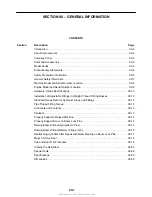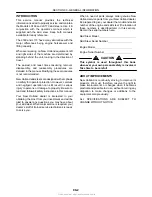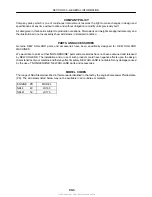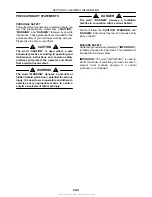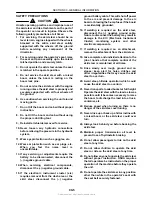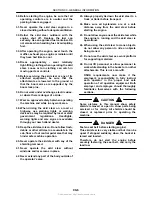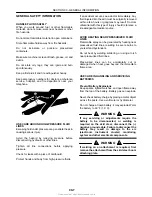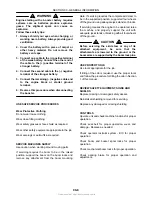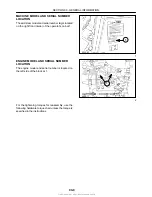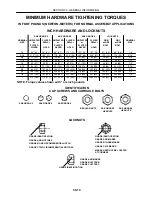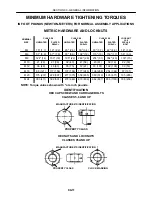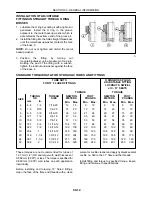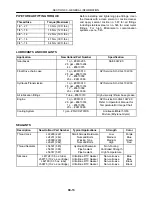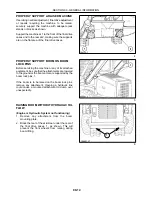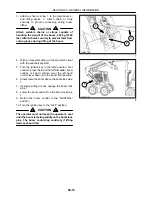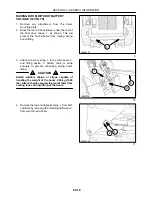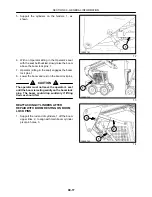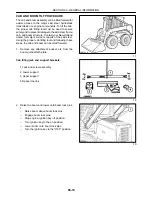
SECTION 00 - GENERAL INFORMATION
00-5
SAFETY PRECAUTIONS
CAUTION
Unsafe operating practices and improper use of
the skid steer and its attachments on the part of
the operator can result in injuries. Observe the
following safety precautions at all times:
1. For servicing, the skid steer should be on
level terrain, engine stopped with the wheels
blocked or the entire skid steer solidly
supported with the wheels off the ground
before servicing any component of the
drivetrain.
2. For servicing under the operator’s seat, raise
the seat and pan assembly up to the raised
latched position and securely latch.
3. Do not operate the skid steer unless the seat
is latched in the operate position.
4. Do not service the skid steer with a raised
boom unless the boom is resting on the
boom lock pins.
5. Do not service the skid steer with the engine
running unless the skid steer is properly and
securely supported with all four wheels off
the ground.
6. Use caution when servicing the unit around
moving parts.
7. Do not tilt the boom and cab without proper
instruction.
8. Do not tilt the boom and cab without using
the proper cab tilting tool.
9. Reinstall all shields removed for service.
10. Never loosen any hydraulic connections
before relieving the pressure in the hydraulic
system.
11. Wear eye protection such as goggles, etc.
12. Wear ear protection such as ear plugs, etc.
When you feel the noise level is
uncomfortable.
13. If any servicing or adjustments require the
battery to be disconnected, disconnect the
(–) negative ground cable.
14. When servicing electrical components,
disconnect the (–) negative ground cable.
15. If the electronic instrument cluster (eic)
requires removal from the dash area or the
skid steer, disconnect the (–) negative
ground battery cable. This will shut off power
to the eic and prevent damage to the eic
board or blowing the 5-amp fuses if the board
is accidentally grounded.
16. If welding is required on the skid steer,
disconnect the (–) negative ground cable.
failure to disconnect the battery may result in
damage to the EIC (Electronic Instrument
Cluster) monitoring system and other
electrical components.
17. If welding is required on an attachment,
remove the attachment from the skid steer.
18. Give complete and undivided attention to the
job at hand so that complete control of the
skid steer is maintained at all times.
19. Drive slowly over rough ground and on
slopes; keep alert for holes, ditches and
other irregularities that may cause the skid
steer to overturn.
20. Avoid steep hillside operation which could
cause the skid steer to overturn.
21. Never transport a loaded bucket at full height.
Operate the skid steer with the load as low as
possible until it becomes necessary to raise
the boom to discharge the load into a truck,
container, etc.
22. Reduce speed when turning so there is no
danger of the skid steer overturning.
23. Never drive up or back up a hill or incline with
a raised boom or the skid steer could over
turn.
24. Always look behind you before backing the
skid steer.
25. Maintain proper transmission oil level to
prevent loss of hydrostatic braking.
26. Do not allow passengers to ride on the skid
steer at any time.
27. Do not allow children to operate the skid
steer or ride on the skid steer at any time.
28. Do not allow anyone to operate the skid steer
without proper instruction. OSHA requires
that all operators be instructed on the proper
operation of the machine before they operate
the unit.
29. Do not operate the skid steer in any position
other than while in the operator’s seat with
the seat belt securely fastened.
Find manuals at http://best-manuals.com/search?&s=NH-60413607


